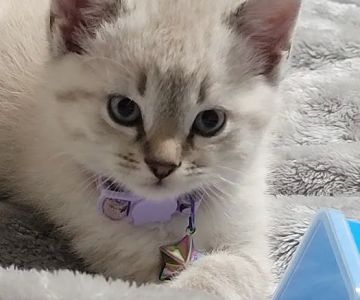How to Train a Dog to Stop Chasing Small Animals
- 1. Understanding Why Dogs Chase Small Animals
- 2. Training Techniques to Prevent Chasing
- 3. Tools and Accessories to Aid in Training
- 4. Importance of Consistency in Training
1. Understanding Why Dogs Chase Small Animals
Many dogs have a natural prey drive, which makes them instinctively chase small animals like squirrels, rabbits, or even smaller pets. This behavior is rooted in their hunting instincts, but it's not always desirable when living in a household environment. Understanding why your dog chases small animals can help you develop the right training approach.
Dogs that are energetic, curious, or under-stimulated may chase animals as a form of play, excitement, or boredom. In some cases, this behavior can also be triggered by a lack of proper socialization or training. Identifying the cause of the behavior is a key first step in knowing how to train a dog to stop chasing small animals.

Small Animal & Exotic, Parkway Vet Parkway, 39321 Garfield Rd, Clinton Twp, MI 48038, USA
See Details2. Training Techniques to Prevent Chasing
Training a dog to stop chasing small animals takes time, patience, and consistency. Below are some effective techniques:
- Positive Reinforcement: Reward your dog with treats and praise when they focus on you instead of the small animal. Use commands like "leave it" or "come" and reinforce these behaviors with rewards.
- Distraction Training: Distract your dog with a toy or treat when they begin to fixate on small animals. Redirect their attention to you in a positive way to break the chase instinct.
- Desensitization: Gradually expose your dog to small animals in controlled environments, rewarding calm behavior and discouraging chasing. Over time, this can reduce their natural response to chase.
These techniques will help your dog learn to ignore small animals and focus on you instead, gradually breaking the chasing habit.
3. Tools and Accessories to Aid in Training
Several tools can aid in the training process, making it easier to control your dog's impulses:
- Leashes and Harnesses: Using a leash or harness during training sessions ensures you have control over your dog when distractions arise. This helps prevent them from chasing the animal while you're working on the commands.
- Long Lines: A long line leash can give your dog more freedom to explore while still maintaining control during training sessions, especially in areas where small animals are present.
- Training Collars: Some pet owners choose to use remote training collars that deliver a mild stimulation or sound to redirect their dog’s attention. These should always be used as a last resort and under the guidance of a professional trainer.
These tools can be a great addition to your training routine, helping to reinforce desired behaviors and maintain control when your dog is tempted to chase.
4. Importance of Consistency in Training
Consistency is key when training your dog to stop chasing small animals. Dogs thrive on routine and repetition. Be patient and persistent with your commands, training sessions, and rewards. Inconsistency will confuse your dog and make the training process longer.
Incorporate training sessions into daily walks and playtimes, and always reward good behavior. With time and effort, your dog will learn to ignore small animals and focus on you instead.
If you're facing challenges with your dog's behavior or need additional help, consider seeking advice from a professional dog trainer. For expert tips and training services, visit Hidden Brook Veterinary for more resources.










